There are a lot of beautiful flowers whose names start with the letter “M”. One of the most commonly known flowers that begin with “M” is the Marigold. These bright and vibrant flowers are popularly used in gardening and landscaping, and are sought after for their capability to attract butterflies and other pollinators.
Another popular flower that starts with M is the Magnolia. These large, fragrant flowers are often seen on trees in warm climates and are a favorite among gardeners and flower enthusiasts. Other flowers that start with M include the Morning Glory, which is a beautiful climbing flower that is popular for its vibrant colors and ability to attract hummingbirds and other pollinators, and the Mistletoe, which is a popular holiday plant that is often used for decorative purposes.
Flower enthusiasts and gardeners alike adore the many beautiful, unique flowers that start with the letter M.
Flowers Name Starting with M
Maiden Pink
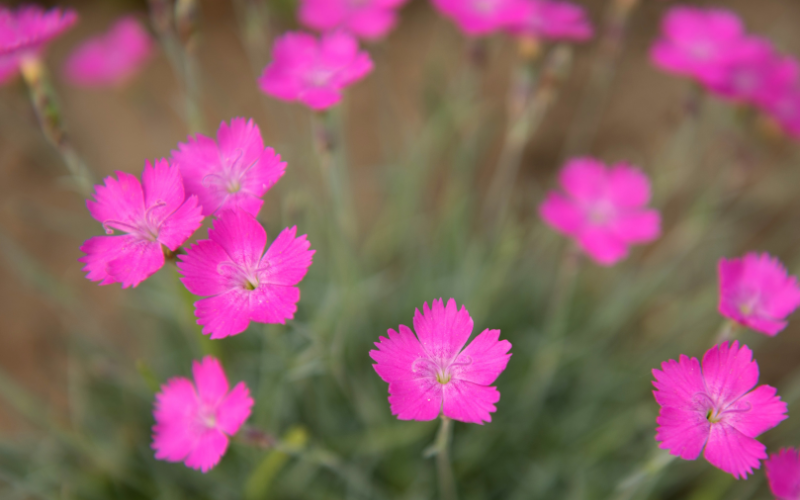
Maiden Pink is a species of flowering plant in the Caryophyllaceae family. It is a perennial herb that is native to Europe and parts of Asia. The plant is named “Maiden Pink” due to the delicate pink flowers it produces.
Maiden Pink is a plant that grows in low mats or tufts and can reach up to 30 centimeters in height. The leaves of this plant are lance-shaped and have a grayish-green color. While it is primarily grown for its decorative value, Maiden Pink has some traditional medicinal uses. It has been used in herbal medicine to treat digestive disorders and as a diuretic.
| Scientific Name | Dianthus deltoides |
| Native Range | Europe and parts of Asia |
| Flowering Season | Late spring to early summer |
Magnolia
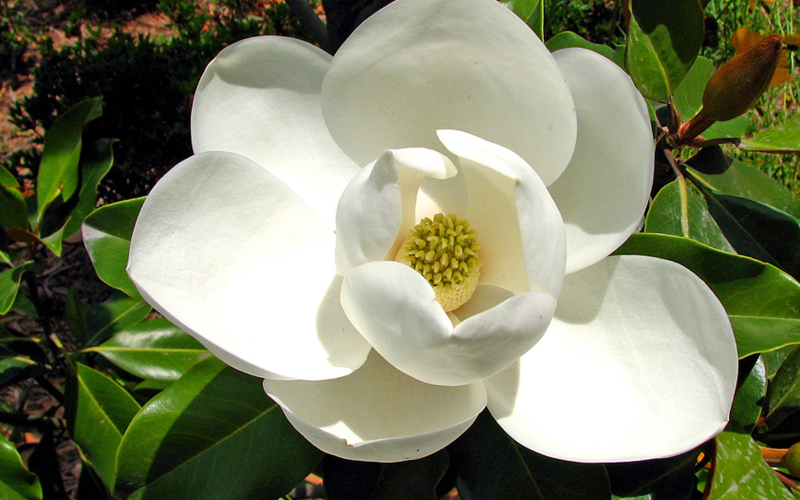
Magnolias, with their large and showy flowers, come in a range of colors, including white, pink, purple, and yellow, and are known for their beautiful fragrance.
Magnolia flowers are renowned for their large bowl or saucer-shaped appearance. They are composed of numerous petals arranged in a spiral pattern, providing a full and graceful look. These splendid flowers are known for their delightful fragrance, which is often a highlight of spring. The timing of magnolia blooms varies depending on the species and climate, but they typically blossom during the spring season.
| Scientific Name | Magnolia |
| Native Range | Asia, North America, and Central America |
| Flowering Season | Spring |
Mirabilis jalapa
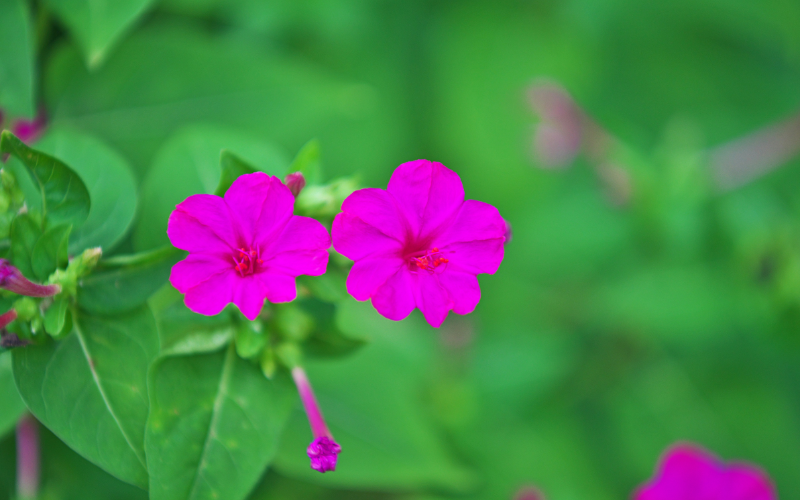
Mirabilis jalapa, also known as Four O’Clock Flower or Marvel of Peru, is a flowering plant that is found in the tropical regions of the Americas. It is popular for its beautiful and sweet-smelling flowers, and for its unique ability to bloom during the late afternoon or evening.
Mirabilis jalapa, also known as Four O’Clock Flower or Marvel of Peru, is a flowering plant that is found in the tropical regions of the Americas. It is popular for its beautiful and sweet-smelling flowers, and for its unique ability to bloom during the late afternoon or evening.
| Scientific Name | Mirabilis jalapa |
| Native Range | Central and South America |
| Flowering Season | Mid-summer |
Maltese Cross
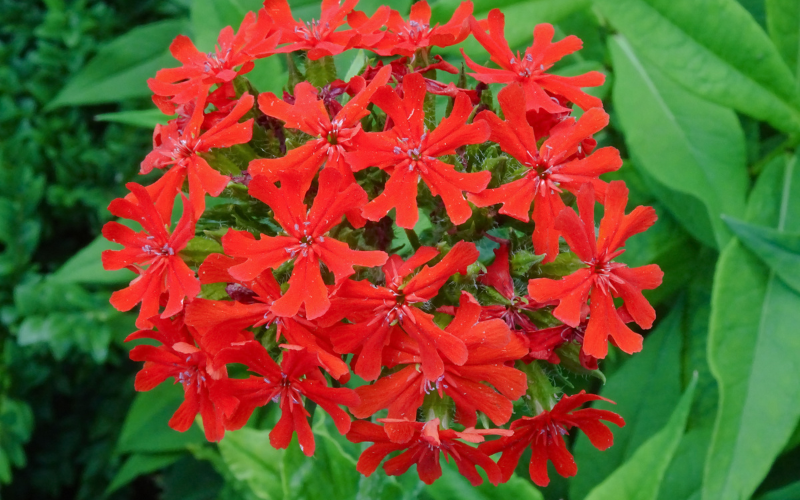
The Maltese Cross flower, scientifically known as Lychnis chalcedonica, is a stunning plant that belongs to the Caryophyllaceae family. Each individual flower has four petals, and the overall appearance of the flower resembles the emblem of the Knights of Malta, hence the name “Maltese Cross.” The flowers are usually about 1 inch (2.5 cm) in diameter and are borne atop tall, sturdy stems.
The Maltese Cross flower is indigenous to parts of Eastern Europe and Asia. It flourishes in areas that receive full sunlight to partial shade and prefers soil that is well-drained. The bright red flowers of the Maltese Cross are famous for their ability to attract bees and butterflies. These useful insects feed on the nectar-rich blooms, which serve as an excellent food source for them.
| Scientific Name | Lychnis chalcedonica |
| Native Range | Europe and western Asia |
| Flowering Season | Summer |
Manzanita
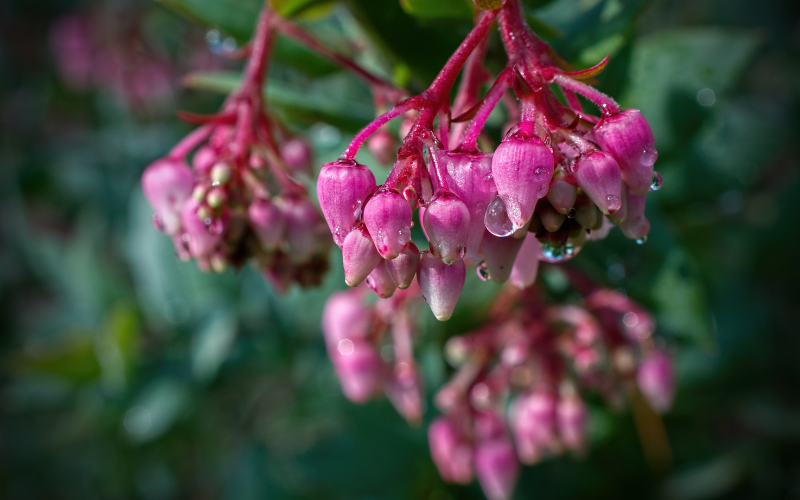
Manzanita plants are not typically cultivated for their flowers, despite being known for their beautiful, smooth bark and small apple-like fruits. However, manzanita plants do produce small, urn-shaped flowers that are usually white or pink and can add subtle beauty to the shrub.
Manzanita plants typically bloom in late winter or early spring, depending on the species and growing conditions. They thrive in dry, arid areas and have distinct characteristics.
| Scientific Name | Arctostaphylos |
| Native Range | North America |
| Flowering Season | Late winter to early spring |
Mexican Bush Sage

Mexican Bush Sage, also known as Salvia leucantha, is a beautiful perennial plant that is native to Mexico and Central America. It belongs to the mint family (Lamiaceae) and is renowned for its spectacular flower spikes and appealing leaves. It is usually grown as a perennial in warmer climates and as an annual in cooler regions.
Mexican Bush Sage is a stunning plant that can grow up to 6 to 12 inches (15 to 30 cm) in height. The flowers are mainly lavender to purple in color, although there are cultivars with white or pink flowers. The plant blooms from late summer to autumn, making it a perfect attraction for bees, butterflies, and hummingbirds. Mexican Bush Sage is a great addition to any garden landscape or border, as it adds a vibrant splash of color and texture.
| Scientific Name | Salvia leucantha |
| Native Range | Central America |
| Flowering Season | Late summer and autumn months |
Missouri Evening Primrose
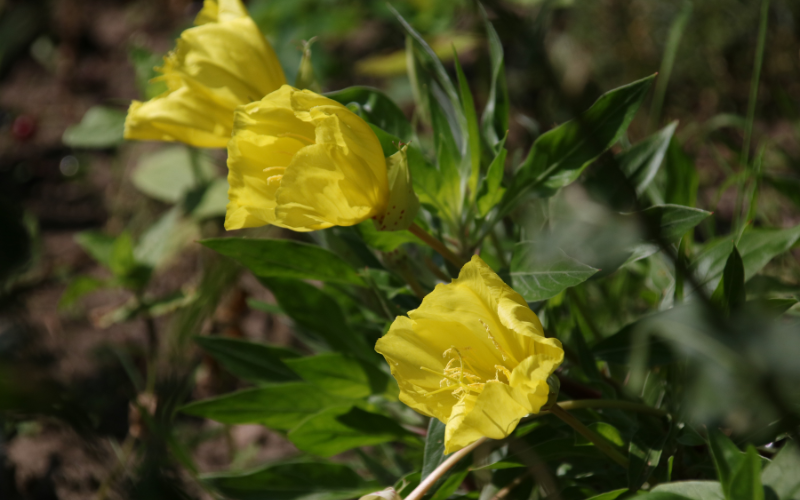
Missouri Evening Primrose (Oenothera macrocarpa) is a member of the Onagraceae family, native to central and western North America, including Missouri.
This plant prefers to grow in areas with full sun exposure and well-drained soil. However, it can also tolerate some light shade and poor soil conditions. It is highly resistant to drought and can thrive in hot and dry climates. As a native plant of North America’s central and western regions, it is well-adapted to the natural conditions found in these areas.
| Scientific Name | Oenothera macrocarpa |
| Native Range | Central and western parts of North America |
| Flowering Season | Late spring to early summer |
Mountain Laurel
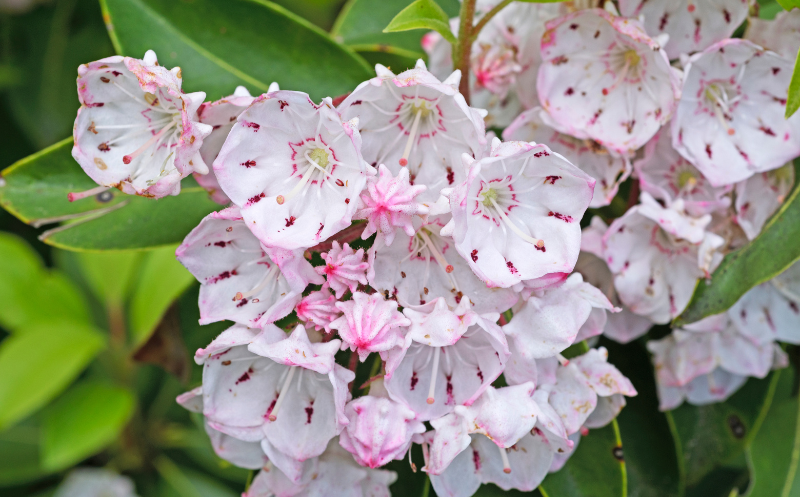
Mountain Laurel is a lovely evergreen shrub of the Ericaceae family. It is a native of eastern North America and is prized for its beautiful flowers, glossy foliage, and general decorative appeal.
Mountain Laurel is a low-maintenance shrub once established. During dry conditions, it benefits from regular irrigation, especially in the first few years of growth. Mulching around the base of the plant aids in moisture retention and weed suppression. Pruning is rarely required, but if it is, it is best done after flowering to maintain the natural shape and remove any dead or broken branches.
| Scientific Name | Kalmia latifolia |
| Native Range | United States |
| Flowering Season | Late spring to early summer |
Mock Orange
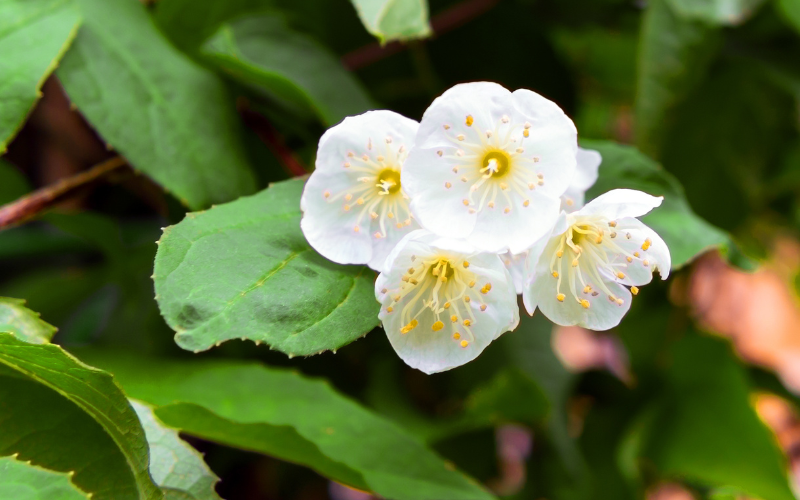
Philadelphus, commonly known as Mock Orange, is a genus of deciduous plants that bear fragrant flowers. They are native to various regions of North America, Europe, and Asia, and belong to the Hydrangeaceae family.
Mock Orange comes in a variety of species and cultivars with varying flower colors, sizes, and growing behaviors. Philadelphus coronarius (common Mock Orange), Philadelphus lewisii (Lewis’ Mock Orange), and Philadelphus ‘Belle Etoile’ (Belle Etoile Mock Orange) are some prominent variations. The flower shape, size, scent, and overall growth characteristics of these types may differ slightly.
| Scientific Name | Philadelphus coronarius |
| Native Range | Europe, France, Italy, Greece, and Turkey |
| Flowering Season | Late spring to early summer |
Moonflower
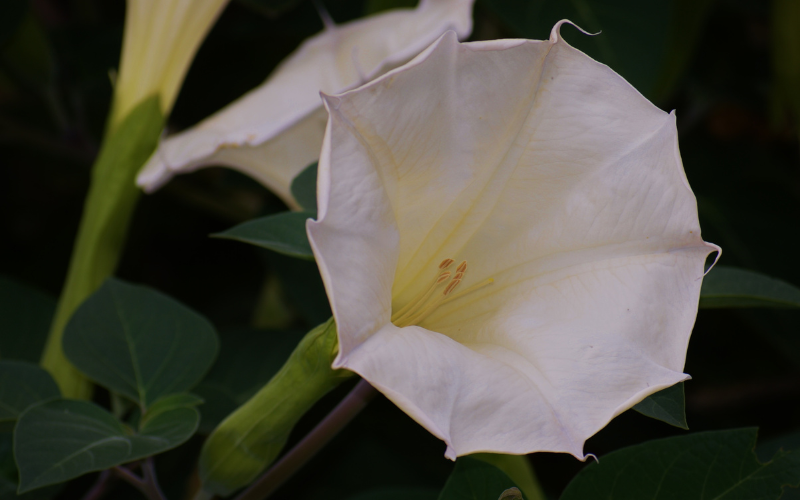
The Ipomoea alba, also known as the moonflower, is a beautiful vine that belongs to the Convolvulaceae family. Its large, fragrant flowers bloom at night and it is native to tropical and subtropical regions of the Americas.
Moonflower is a heat-loving plant that requires high temperatures to grow and bloom. It is usually grown as an annual in cooler regions, but can also be cultivated as a perennial in frost-free areas. Since it is a vigorous climber, it will need support from a trellis, fence, or arbor.
| Scientific Name | Ipomoea alba |
| Native Range | Mexico, Central America, and parts of South America |
| Flowering Season | Summer |
Monk’s Hood
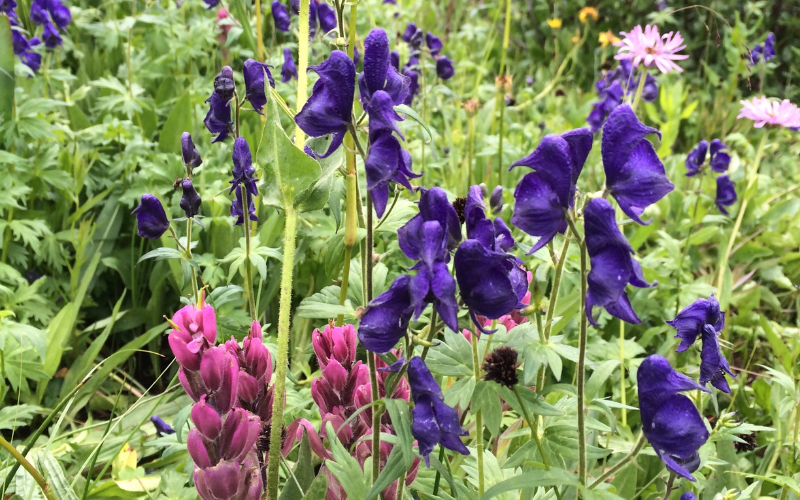
Monk’s Hood is a beautiful flower belonging to the Ranunculaceae family. It is named after the shape of its flowers, which resemble the hoods worn by medieval monks.
Monk’s Hood is a highly toxic plant that is commonly found in gardens. All parts of the plant, including the roots, leaves, and flowers, contain toxic alkaloids like aconitine. It’s important to exercise extreme caution when handling or growing Monk’s Hood. Ingestion or skin contact with the plant can lead to severe poisoning. Therefore, it is highly advisable to wear gloves when working with Monk’s Hood and keep it away from children and pets.
| Scientific Name | Aconitum |
| Native Range | Europe, Asia, and North America |
| Flowering Season | Summer |
Mandevilla
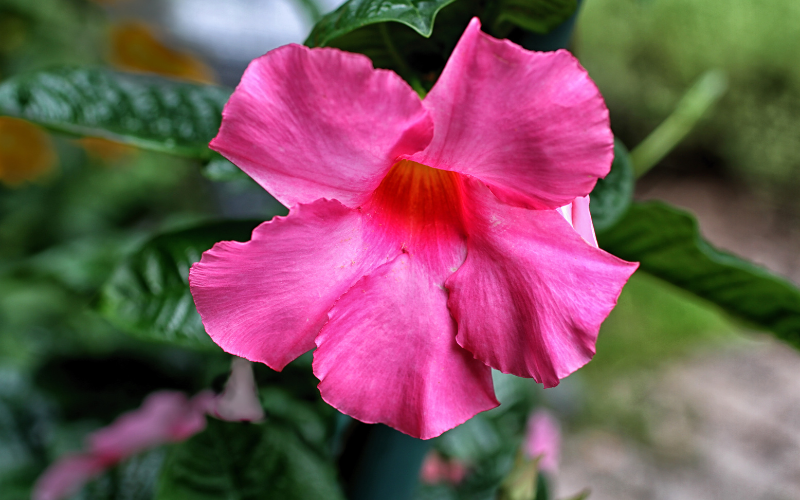
Mandevilla is a tropical flowering plant with large, elegant, trumpet-shaped flowers that come in various colors such as pink, red, white, and yellow.
Mandevilla plants usually have flowers that are about 2 to 4 inches (5 to 10 cm) in diameter. These plants can produce flowers for an extended period, from late spring or early summer until the fall. If you take good care of them, they can continue to bloom for several months.
| Scientific Name | Mandevilla |
| Native Range | South and Central America |
| Flowering Season | Late spring or early summer |
Marguerite Daisy
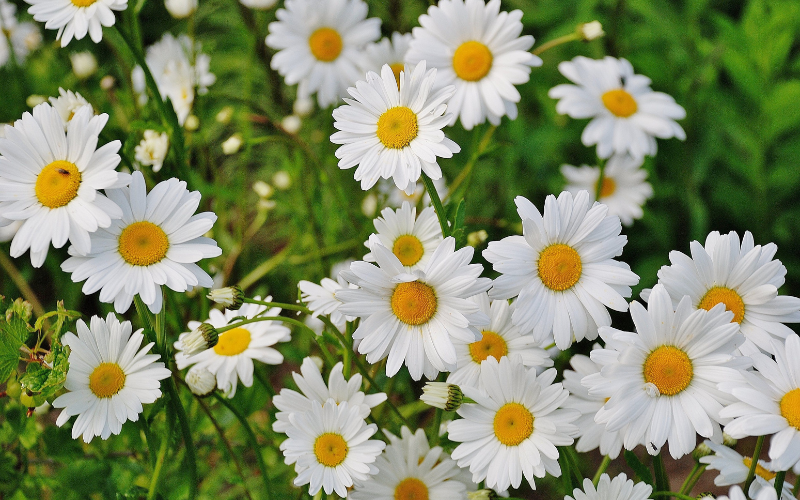
The Marguerite Daisy is a popular flowering plant appreciated for its charming daisy-like flowers and overall beauty. It is also scientifically known as Argyranthemum frutescens.
Marguerite daisies are available in a variety of colors, such as white, pink, yellow, or a combination of these shades. The petals are usually brightly or pastel-colored, making for a stunning display of blooms. They usually bloom from late spring to early summer and continue until the first frost in September. With proper care, they can produce flowers all year round, making them a popular choice for gardens and containers.
| Scientific Name | Argyranthemum |
| Native Range | Northwest coast of Africa. |
| Flowering Season | Late spring to early fall |
Matthiola
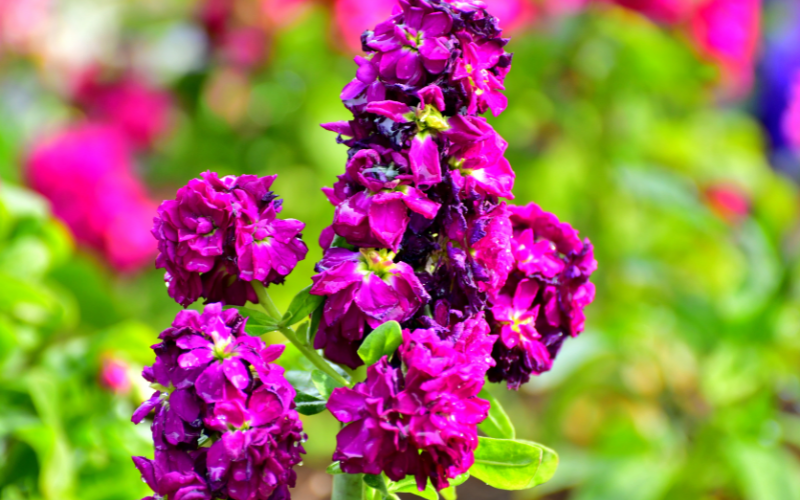
“Matthiola” is a stunning flower that comes in a diverse range of colors, including pink, purple, white, red, and yellow. Typically, these flowers are small to medium-sized with diameters of approximately 1 to 2 inches (2.5 to 5 cm).
Matthiola flowers bloom in spring/summer and attract bees/butterflies with vibrant colors and fragrances.
| Scientific Name | Matthiola incana |
| Native Range | Asia |
| Flowering Season | Early summer |
Maximilian Sunflower
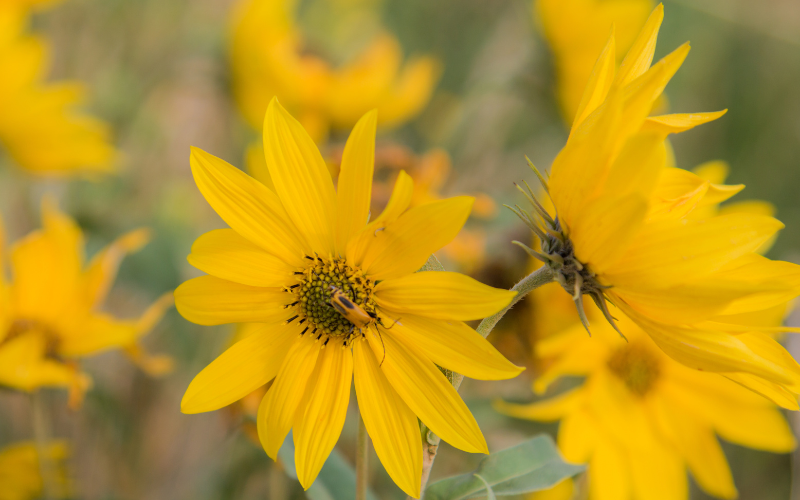
The Maximilian Sunflower, Helianthus maximiliani, is a tall and beautiful perennial sunflower that is native to North America. It was named after Prince Maximilian of Wied-Neuwied, a 19th-century German scientist who collected specimens during his travels.
Pollinators like bees and butterflies are attracted to Maximilian sunflowers, which also provide food for birds – a great choice for wildlife-friendly gardens.
| Scientific Name | Helianthus maximiliani |
| Native Range | North America |
| Flowering Season | Summer |
Million Bells
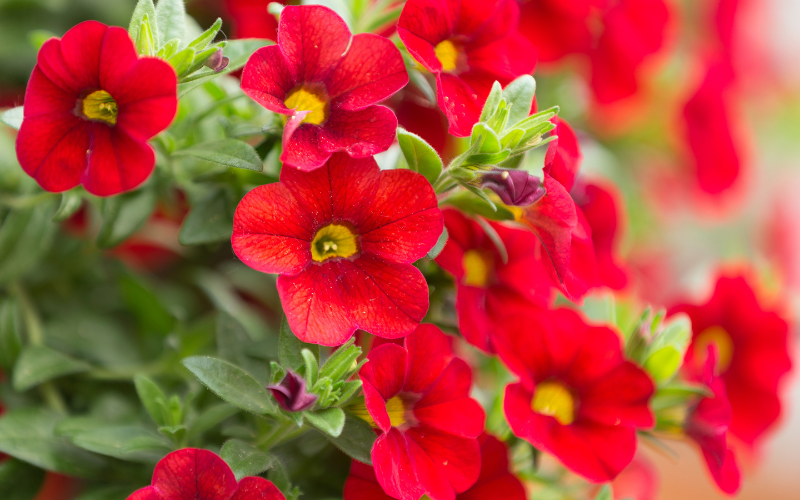
Million Bells, a colorful addition to containers, hanging baskets, and garden borders, is a popular flowering plant that belongs to the Solanaceae family, the same family as petunias and tomatoes.
Million Bells are known for their continuous blooming between spring and autumn. They produce numerous flowers that cover the plant, creating a colorful display.
| Scientific Name | Calibrachoa |
| Native Range | South America, including Brazil and Uruguay |
| Flowering Season | Spring |
Mina lobata
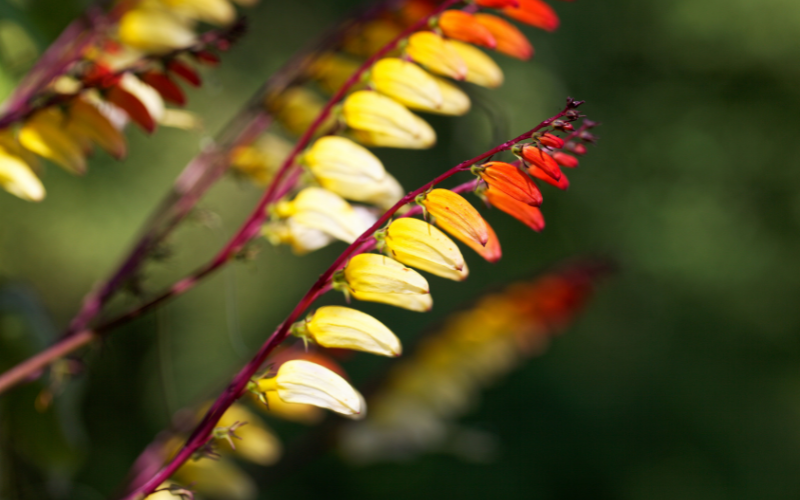
Mina lobata, often known as the Spanish flag or exotic love vine, is a Convolvulaceae family flowering vine. It is native to Mexico and Central America and is grown for its beautiful, colorful blossoms.
Mina lobata blooms from midsummer to early autumn. The blooms are borne in long clusters or racemes, with many flowers flowering along the stalk. It is reasonably simple to cultivate from seeds, which should be seeded inside around 6 to 8 weeks before your area’s last frost date, or immediately in the garden after the threat of frost has gone.
| Scientific Name | Ipomoea lobata |
| Native Range | Central and South America |
| Flowering Season | Summer |
Michaelmas Daisy
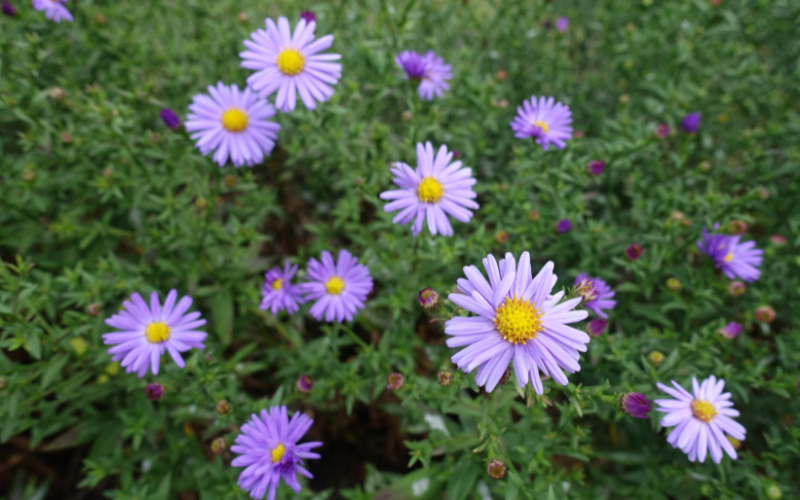
Michaelmas Daisy, also known as Aster, is a beautiful flowering plant that comes in a wide range of colors, including shades of purple, blue, pink, white, and even some bi-colored varieties.
Michaelmas Daisy is a plant whose flower heads can vary in size from small to medium, measuring around 1 to 2 inches (2.5 to 5 cm) in diameter. It generally blooms in late summer and early autumn, and its flowers are known to attract bees and butterflies.
| Scientific Name | Aster |
| Native Range | North America, Europe, and Asia |
| Flowering Season | Late summer and early fall |
Mealycup Sage
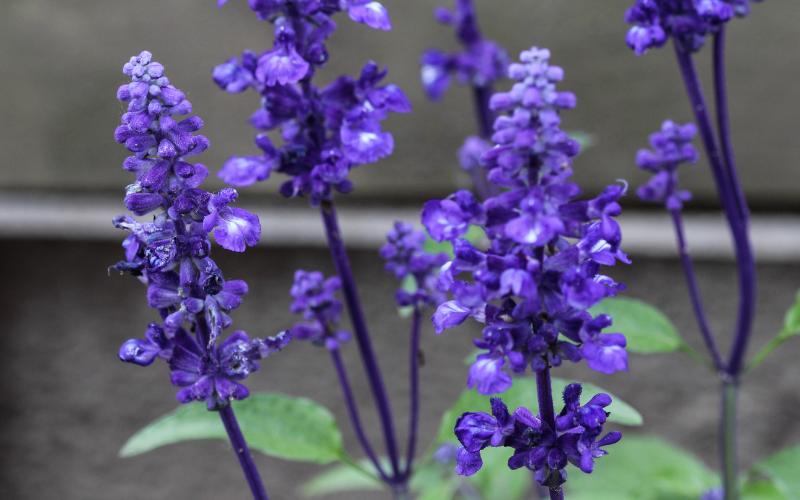
Mealycup Sage is a beautiful flowering plant that produces stunning blooms ranging from pale blue to deep violet blue. Some cultivars have white, pink, or purple flowers. The individual flowers are typically small, measuring around 1 inch (2.5 cm) in length.
Mealycup Sage blooms from spring to summer and attracts bees and butterflies with its tubular flowers. It adds vibrancy to the garden with its velvety texture and blue color.
| Scientific Name | Salvia farinacea |
| Native Range | North and Central America |
| Flowering Season | Late spring to early fall |
Mexican Sunflower

The Mexican Sunflower, which belongs to the Asteraceae family, is a stunning and vibrant flower native to Mexico and Central America. It has bright orange to red-orange flowers with a dark center.
The Mexican Sunflower is characterized by its large flowers, which are typically around 3 to 4 inches (7.5 to 10 centimeters) in diameter. These flowers are known to bloom for an extended period, often lasting from mid-summer through fall.
| Scientific Name | Tithonia diversifolia |
| Native Range | Mexico and Central America |
| Flowering Season | Summer, fall |
Mexican Fire Barrel
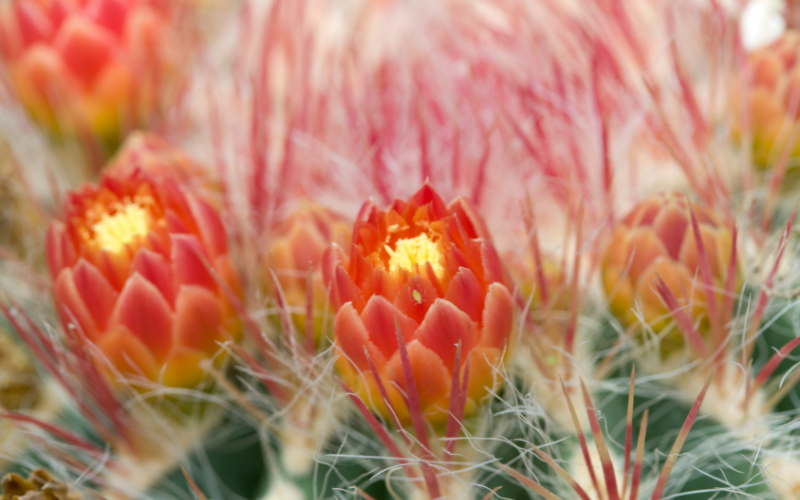
The Mexican Fire Barrel flower, scientifically known as Echinocactus platyacanthus, is a remarkable and distinctive plant that originates from Mexico. It can reach up to 6 feet (1.8 meters) in height and 3 feet (0.9 meters) in diameter, making it an impressive sight to behold.
During late spring or early summer, the exotic Mexican Fire Barrel flower blooms and adds a touch of beauty to gardens and landscapes in the desert.
| Scientific Name | Ferocactus pilosus |
| Native Range | Mexico |
| Flowering Season | Late spring to early summer |
Mediterranean Sea Holly
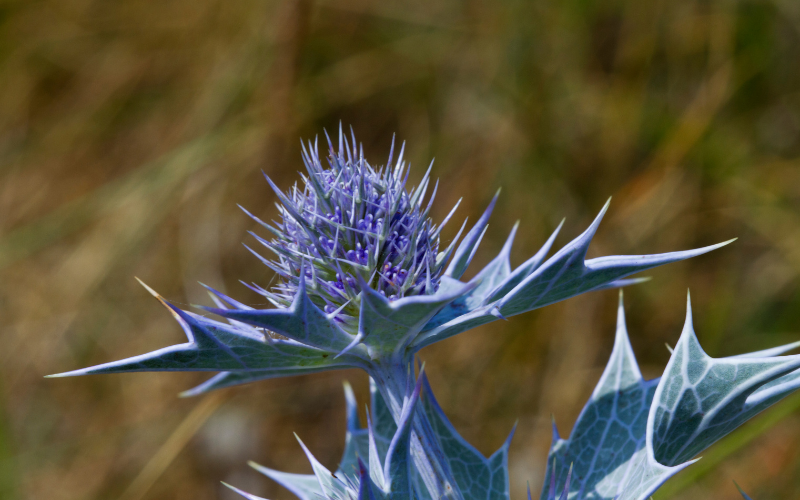
The Mediterranean Sea Holly (Eryngium bourgatii) is a unique and stunning flowering plant native to the Mediterranean region. Its metallic-blue to electric-blue flowers create a beautiful contrast with the silvery-blue foliage.
The Mediterranean Sea Holly typically blooms during the summer months, from late spring to mid-summer. The plant can reach a height of about 2 to 3 feet (60 to 90 centimeters).
| Scientific Name | Eryngium bourgatii |
| Native Range | Morocco, Lebanon, Turkey, France, and Spain |
| Flowering Season | Summer |
Meadow Sage
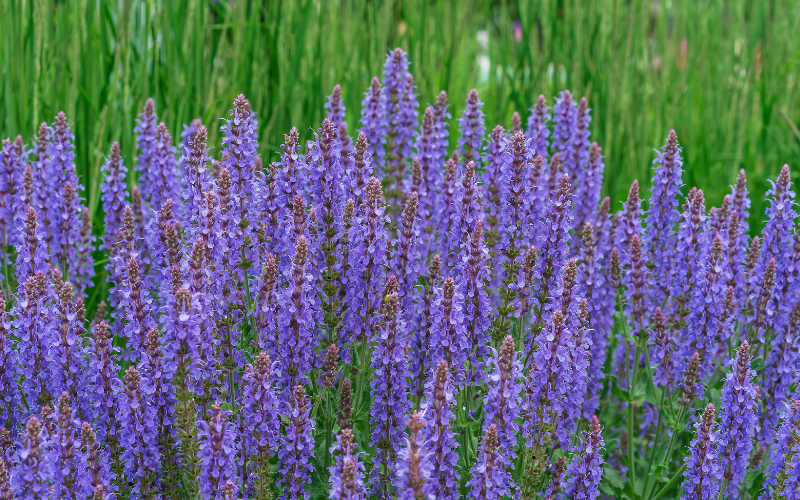
Meadow Sage, scientifically known as Salvia nemorosa, is a stunning flowering plant native to Europe and Asia. Its most common flower colors include shades of blue, purple, and pink.
Meadow Sage thrives in various environments, from sunny meadows to well-drained garden beds. Its delicate yet robust blooms attract pollinators and admirers alike, offering a captivating sight in any garden setting.
| Scientific Name | Salvia pratensis |
| Native Range | Europe, western Asia and northern Africa |
| Flowering Season | Summer |
Meadow Rue
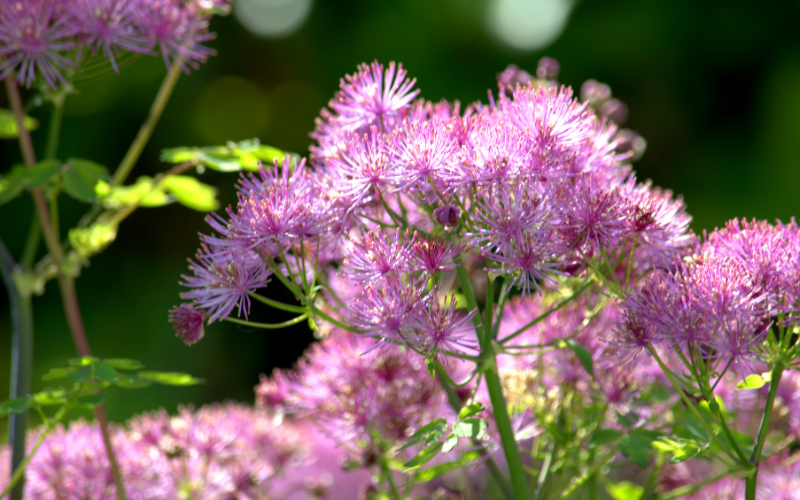
The Thalictrum plant, commonly known as meadow rue, is a unique and stunning flower native to temperate regions of North America, Europe, and Asia.
Meadow Rue flowers bloom in various colors, including white, yellow, pink, purple, and green during the late spring and throughout the summer months, providing a beautiful display of flowers.
| Scientific Name | Thalictrum |
| Native Range | Colorado Rocky Mountain forests to central and eastern North America including parts of south eastern Canada |
| Flowering Season | Late spring to early summer |
Meadow Bistort
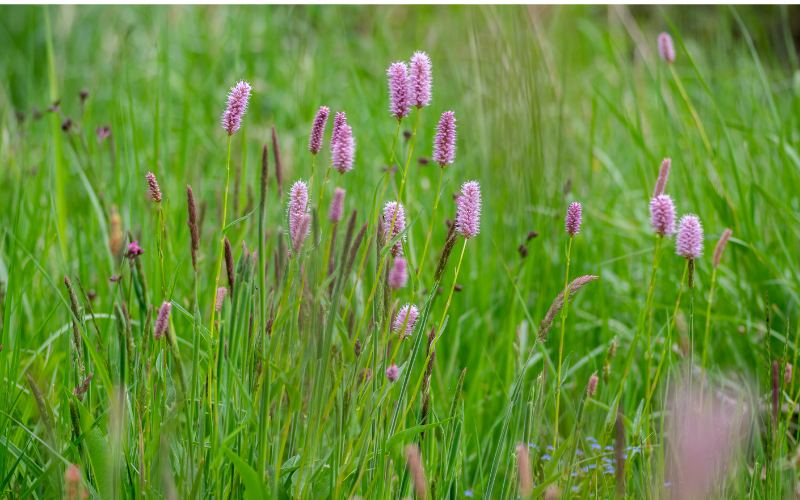
The Meadow Bistort, scientifically known as Persicaria bistorta (formerly Polygonum bistorta), is a beautiful flower that is native to Europe and parts of Asia.
The Meadow Bistort plant typically grows up to 30-70 cm (12-28 inches) tall and has lance-shaped leaves with a prominent mid-vein. Each flower is small, bell-shaped, and pink to pale purple in color. Meadow Bistort usually blooms in late spring to early summer.
| Scientific Name | Persicaria bistorta |
| Native Range | Europe and northern and western Asia |
| Flowering Season | Late spring to early summer |
Mazus
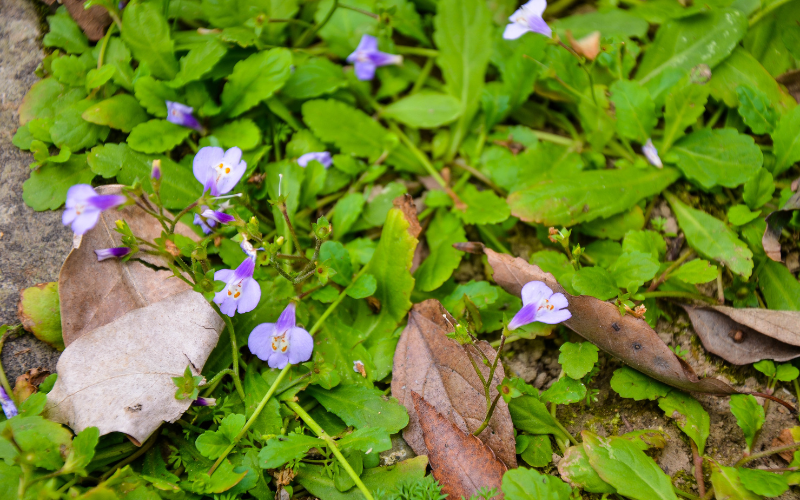
The Mazus is a stunning and beautiful flower native to Asia, including China, Japan, and Korea. Its flowers are usually small, about 1 to 2 centimeters in diameter.
They have a tubular shape with five lobes and can be found in various colors, including white, purple, lavender, pink, and blue. Mazus typically blooms in late spring to early summer.
| Scientific Name | Mazus |
| Native Range | Asia |
| Flowering Season | Spring and Summer |
Muscari
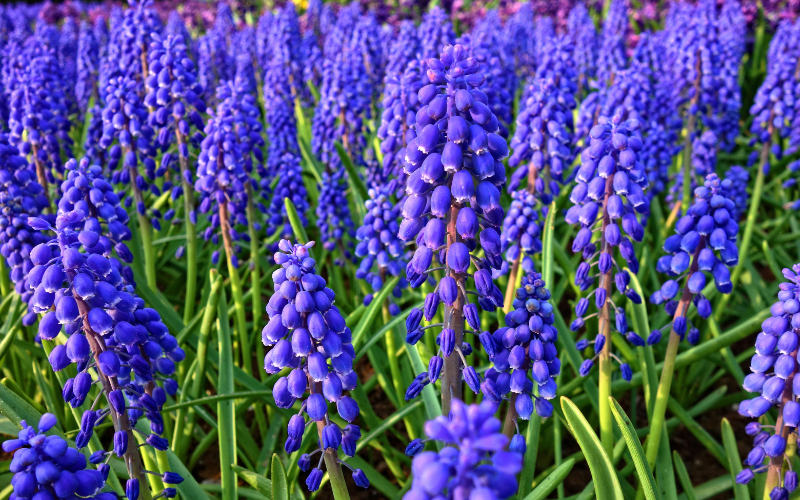
The Muscari is a stunning flower that is indigenous to certain regions in Europe, Asia, and North Africa. These flowers come in a variety of colors including blue, purple, white, and pink, depending on the species and variety. Typically, the Muscari flowers bloom during the spring season, usually from mid to late spring.
The blooming time varies among species and depends on the local climate. These plants thrive in well-drained soil and tolerate full sun or partial shade.
| Scientific Name | Muscari armeniacum |
| Native Range | Mediterranean basin, central and Southern Europe, northern Africa, western, central and south-western Asia |
| Flowering Season | Mid-Spring |
Miss Willmott’s Ghost
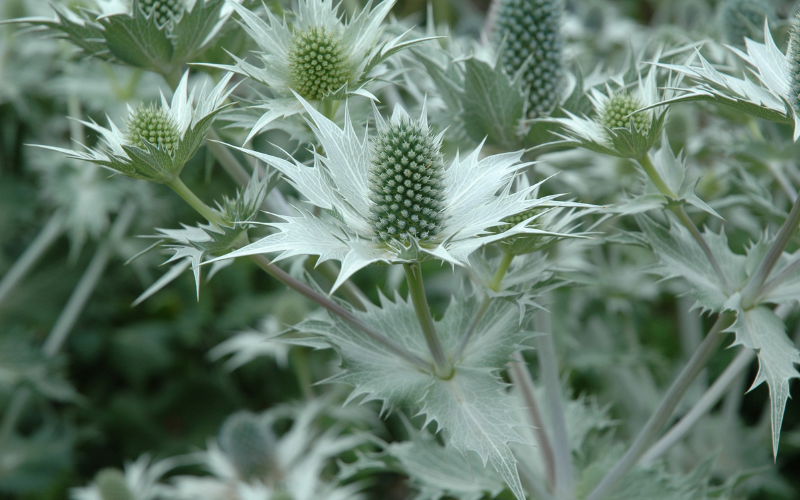
Miss Willmott’s Ghost, also known as Eryngium giganteum, is a stunning flower that is native to southeastern Europe. The plant is named after Ellen Willmott, a British horticulturist who lived from 1858 to 1934. With its silver-gray stems and leaves, adorned with spiky, silvery-blue bracts, Miss Willmott’s Ghost appears as if it has emerged from a mystical realm.
Miss Willmott’s Ghost blooms from late spring to early summer in well-drained soil and full sun.
| Scientific Name | Eryngium giganteum |
| Native Range | The Caucasus and Iran in Western Asia |
| Flowering Season | Summer |
Mimosa

The Mimosa, also known as Acacia dealbata, is a unique flower native to South America. Its flowers are small, fluffy, globe-shaped, and pink or lavender in color.
Mimosa pudica usually reaches a height of 30-60 cm (12-24 inches). Its small, spherical flowers are pink or lavender and bloom during summer.
| Scientific Name | Mimosa pudica |
| Native Range | Southern Central and South America |
| Flowering Season | Late spring to early summer |
Melocactus
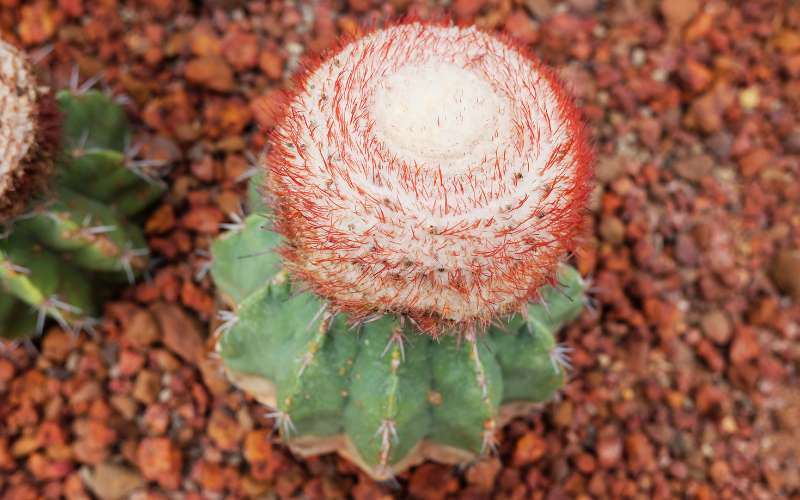
The Melocactus, also known as the Turk’s Cap cactus, is a stunning plant native to the Caribbean and South America, and is known for producing bright pink to magenta-colored flowers.
The cactus flowers are generally small and thrive in well-drained, sandy soils with full to partial sun exposure.
| Scientific Name | Melocactus |
| Native Range | America |
| Flowering Season | Summer |
Musk Mallow
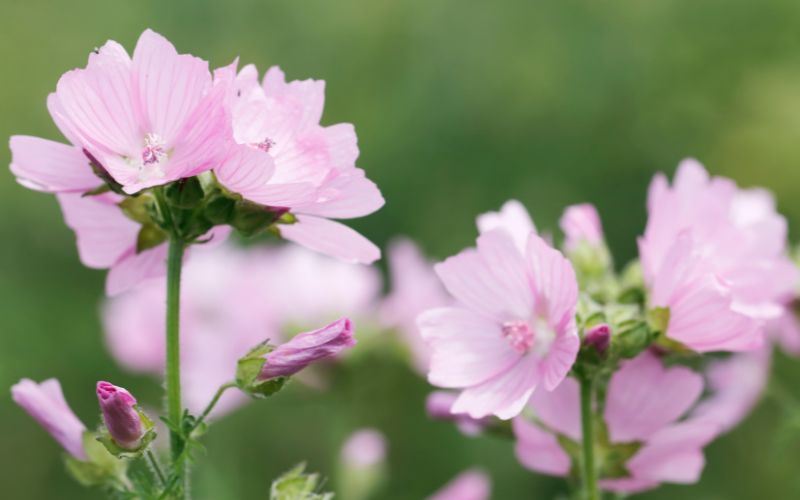
Musk mallow is a charming and versatile flower. It is scientifically known as Malva moschata. It is native to Europe and parts of Asia. These flowers can be various shades of pink, from pale to deep pink, and white.
It typically blooms from late spring through summer and sometimes into early fall. Musk mallow prefers full sun to light shade and can adapt to various soil types, as long as they are well-draining.
| Scientific Name | Malva moschata |
| Native Range | Europe and Southwestern Asia |
| Flowering Season | Early Summer to Fall |
Morning Glory
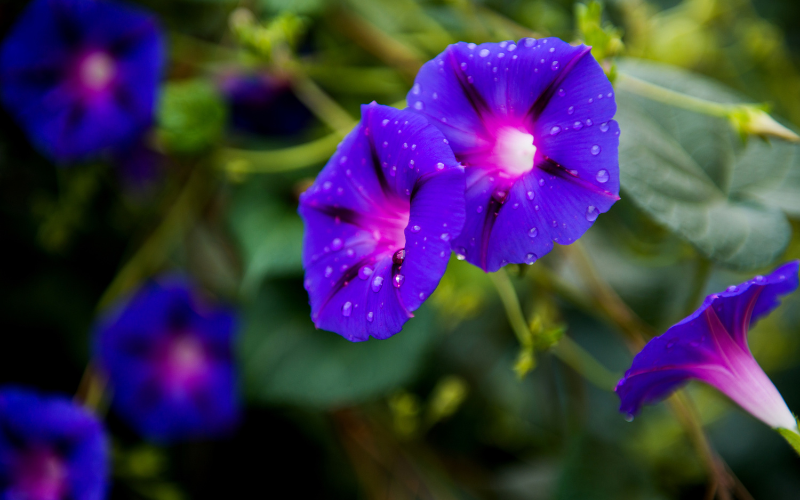
Morning Glory is a beautiful flower. It is scientifically known as Malva moschata. It is native to America. It comes in shades of blue, purple, pink, and red. Morning glory flowers usually bloom in the morning and close in the afternoon or evening.
It thrives in full sunlight and prefers well-drained soil, adapting to various types.
| Scientific Name | Ipomoea |
| Native Range | Central and South America |
| Flowering Season | Early summer to the first frost of fall |
Monk’s Hood

Monk’s Hood is a lovely flower. It is scientifically known as Aconitum. It typically blooms in late summer to early fall. The flowers come in various shades, including deep blue, purple, and white or yellow.
The Monk’s Hood flower is known for its potent medicinal properties.
| Scientific Name | Aconitum |
| Native Range | Europe |
| Flowering Season | Mid- To Late Summer |
Meconopsis

Meconopsis, commonly known as the Himalayan blue poppy, is a beautiful flower that comes in shades of blue, purple, pink, and white. The flowers have a unique and eye-catching appearance, often resembling colorful cups or goblets.
It typically flowers from late spring to early summer and thrives in cool, moist conditions with dappled sunlight.
| Scientific Name | Meconopsis |
| Native Range | Asia |
| Flowering Season | Spring |
Mayflower
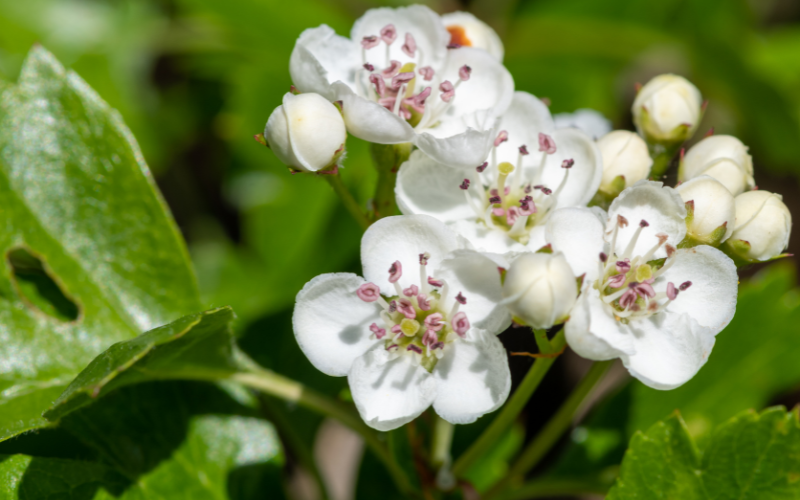
Epigaea repens, commonly known as Mayflower, is a low-growing, trailing, or creeping evergreen plant native to North America that blooms in the spring.
Mayflowers thrive in well-draining, acidic soil. These flowers hold great significance as symbols of strength and perseverance.
| Scientific Name | Epigaea repens |
| Native Range | United States |
| Flowering Season | Spring |
Matucana Aureiflora
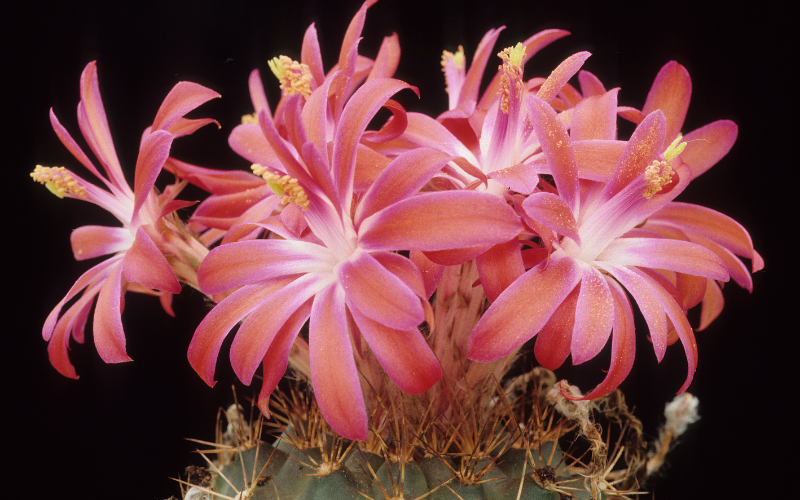
Matucana Aureiflora is a beautiful flower that is native to the Andean region of South America, particularly Peru. They come in a range of colors from red and orange to yellow and pink, and can grow up to 2 inches in diameter.
The Matucana Aureiflora is renowned for its heavenly scent, which elevates its already stunning appearance.
| Scientific Name | Borzicactus aureiflorus |
| Native Range | South America, Peru |
| Flowering Season | Spring and Summer |
Marigold
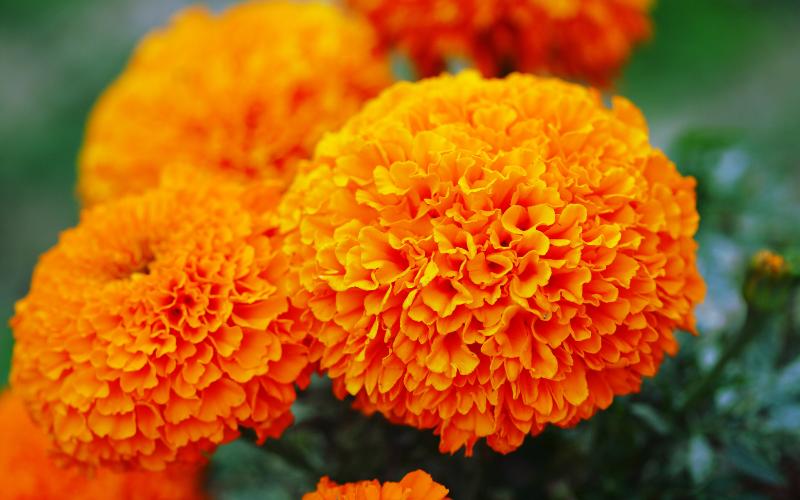
Marigold is a beautiful flower scientifically known as Tagetes. It is indigenous to North and South America. Although they are typically found in brilliant shades of yellow and orange, some variants can also be red, maroon, or cream-colored.
They prefer well-draining soil and full sunlight, and are often used in garden beds or as border plants to add color.
| Scientific Name | Tagetes |
| Native Range | America |
| Flowering Season | Summer |
Mallow
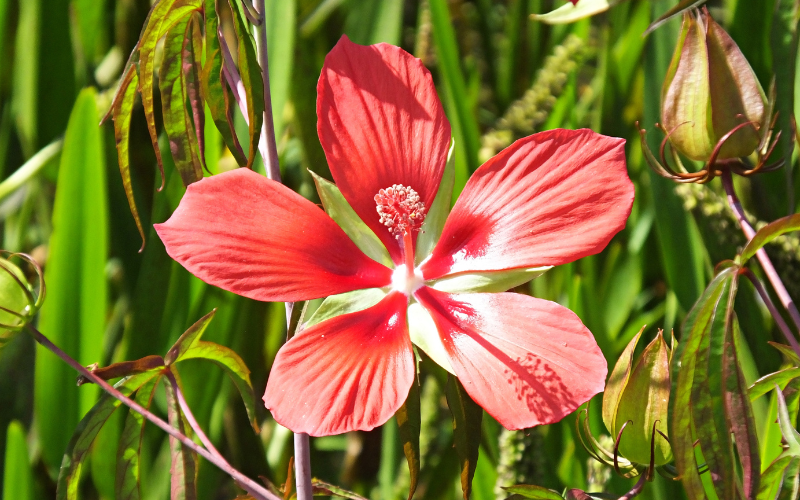
Mallow is a beautiful flower. It is scientifically known as Malva sylvestris. It is native to Europe, North Africa, and Asia. Mallow flowers come in a variety of colors, including shades of pink, purple, white, and lavender.
It typically thrives in full sun to partial shade and well-draining soil. It’s often found in disturbed habitats, meadows, and along roadsides.
| Scientific Name | Malva |
| Native Range | Europe, Western Asia, and Northern Africa |
| Flowering Season | Early summer until fall |
Mammillaria Dixanthocentron
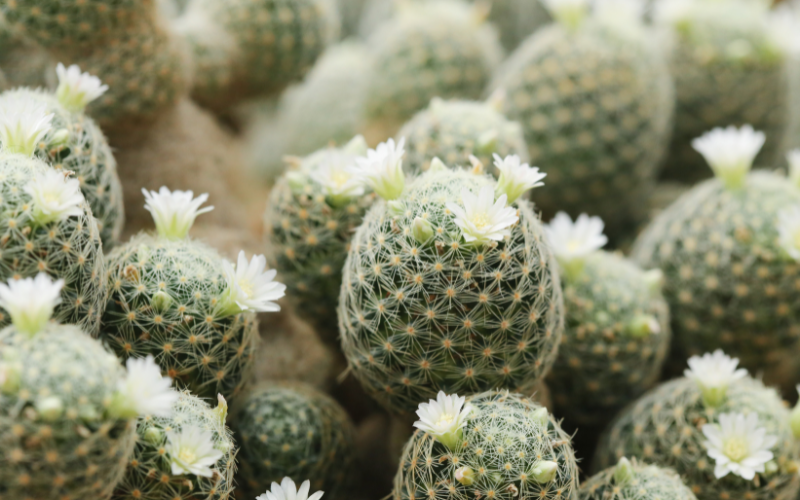
Mammillaria Dixanthocentron is a beautiful flowering plant native to Mexico that blooms in shades of yellow and orange during the spring and early summer.
For the Mammillaria Dixanthocentron to bloom annually, it needs well-draining soil, adequate sunlight, and frost protection.
| Scientific Name | Mammillaria Dixanthocentron |
| Native Range | Mexico |
| Flowering Season | Spring and Early Summer |
Question & Answer
What big leaf plant starts with M?
One big leaf plant that starts with the letter “M” is the Monstera deliciosa, commonly known as the Swiss cheese plant or split-leaf philodendron.
What plant is a small mother of millions?
The plant commonly known as “Mother of Thousands” or “Mother of Millions” is Kalanchoe daigremontiana.
What is the rarest flower?
One of the rarest and most elusive flowers in the world is the Ghost Orchid (Dendrophylax lindenii).
Are flowers a symbol?
Yes, flowers are often used as symbols and have different meanings associated with them across various cultures and contexts.
What is King of Flowers?
The “King of Flowers” is often used as a title for the Rose.
